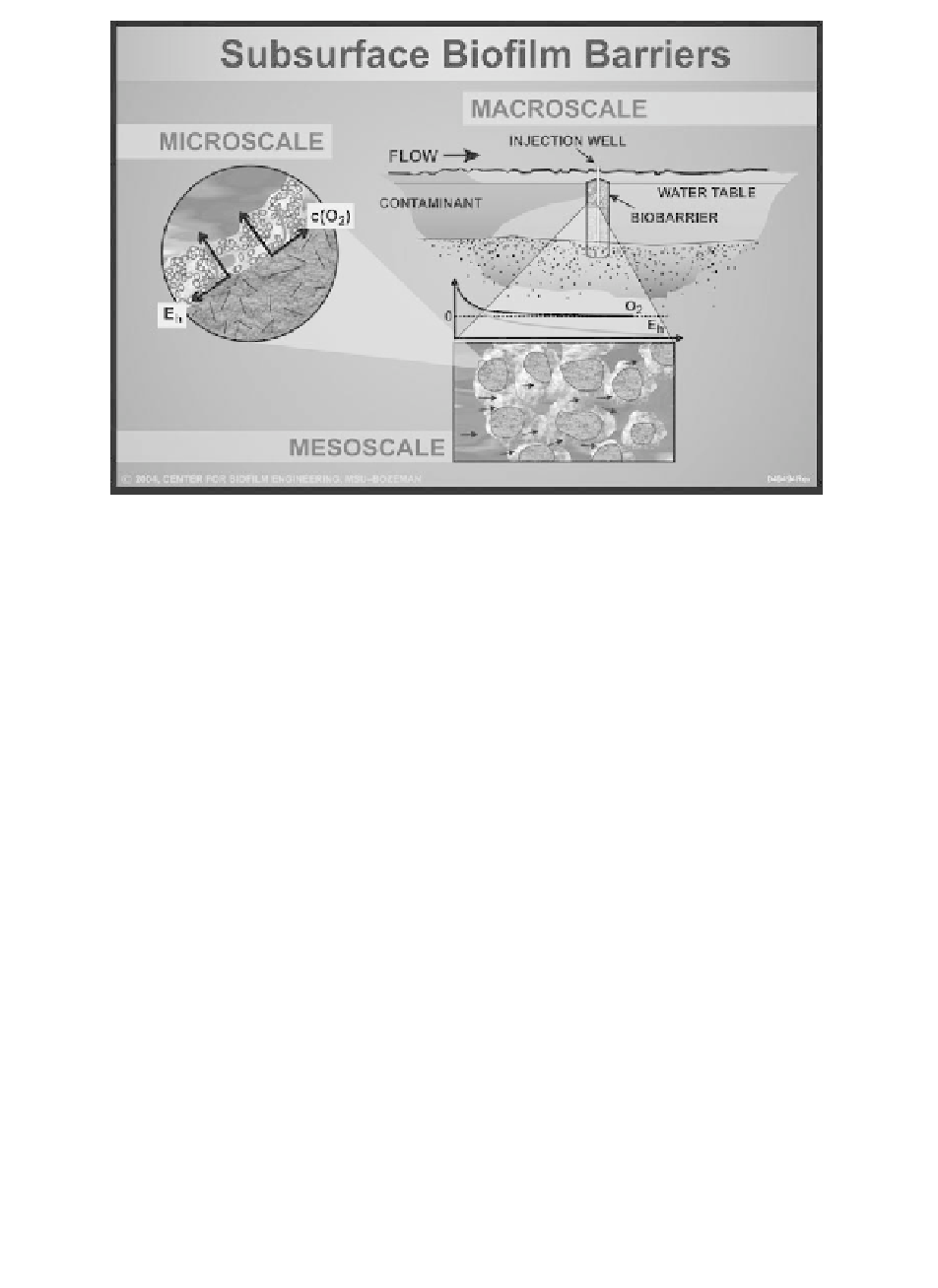Biomedical Engineering Reference
In-Depth Information
FIGURE 5.9
Schematic of a low-permeability subsurface biofilm barrier. Such barriers have
been established at the field scale through the injection of bacteria and/or
nutrients. Thick biofilm growth is promoted in the pore space, which reduces
soil permeability. Nutrient and electron acceptor consumption create gradi-
ents (as indicated by decreasing oxygen concentrations and redox potential
[E
h
]) along the direction of groundwater flow (see mesoscale schematic) and
transversally into the biofilm (see microscale schematic).
of approximately 100 mg/L (Cunningham et al
.
2003). This biofilm barrier
was designed for maximum reduction of permeability; however, the observa-
tion of nearly complete nitrate removal has led to additional research efforts
designed to optimize permeability and contaminant transformation rates in
reactive subsurface biofilm barriers.
Low permeability and reactive as well as permeable and reactive subsur-
face biofilm barriers have been proposed (Figure 5.10). Komlos et al
.
(2004,
2006) evaluated the possibility of establishing biofilm barriers capable of simul-
taneously providing a reduction in soil permeability and trichloroethylene
(TCE) degradation. These studies led to the development of readily deploy-
able strategies for controlling the relative abundance of different species in
defined mixed-culture biofilms in porous media (Komlos et al
.
2004, 2005,
2006).
Permeable reactive subsurface barriers for the treatment of chlorinated
solvents, heavy metals, and radionuclides have been proposed and employed in

Search WWH ::

Custom Search